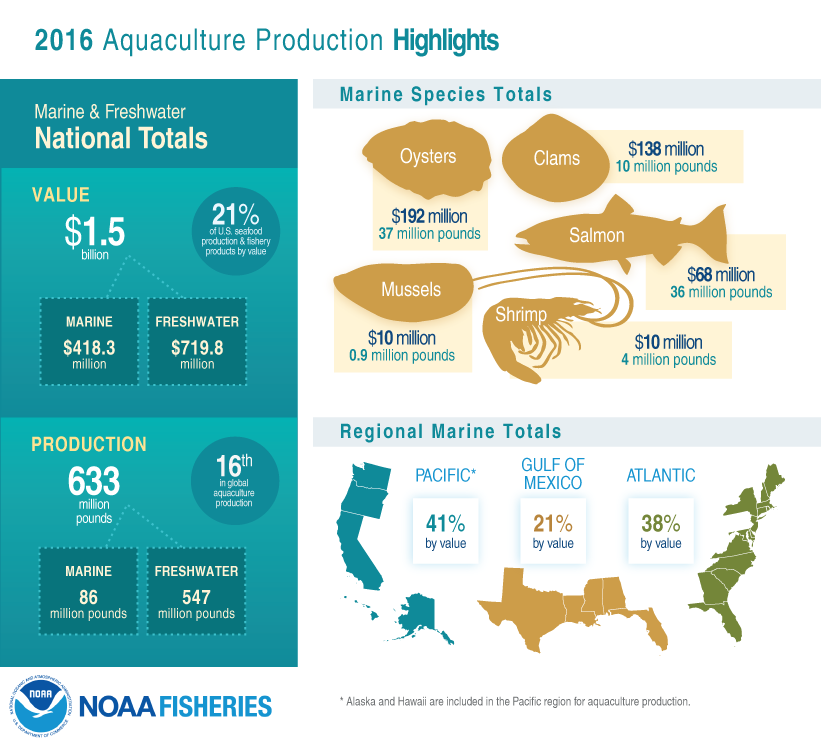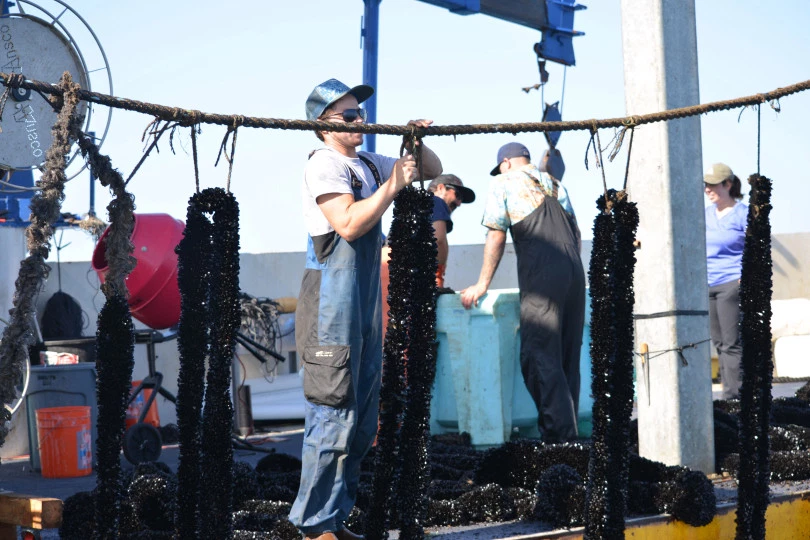March 7, 2019
In the United States, we love our seafood! Demand remains high. However, approximately 91% of the seafood products sold in our country are imported, and roughly half of those imports are produced by aquaculture. These imports have contributed to a significant seafood trade deficit, which reached $14 billion in 2016.
Increased domestic aquaculture production, including shellfish aquaculture, consistently has been identified as one solution to reduce our reliance on imports, while also promoting local economic development and job creation. However, that’s easier said than done.

Marine aquaculture, including shellfish production, faces many challenges, ranging from cost to technical issues. However, legal impediments, including permitting, are consistently ranked as a top challenge. One reason for that is laws and regulations in some cases create, or can be perceived as, obstacles to the growth of the marine aquaculture industry. In addition, disagreements between groups of people with an interest in how our ocean space is used can create the potential for legal challenges, and disagreements can occur with both new and existing shellfish aquaculture facilities.
But before states and the industry can effectively address these issues as they consider expansion of shellfish aquaculture, they need information about the suite of potential legal impediments to more effectively manage conflict and develop solutions. My Sea Grant legal colleagues and I realized comprehensive research and outreach was needed rather than the piecemeal, issue-by-issue research that had been done in the past.
In 2017, the National Sea Grant College Program funded a collaboration to conduct research and outreach to examine legal impediments more closely, focusing on shellfish aquaculture. California Sea Grant Extension and Program Analyst Catherine Courtier and I collaborated with numerous Sea Grant programs to conduct case studies from across the country to broaden understanding of the legal and regulatory context governing shellfish aquaculture.
Shellfish aquaculture in federal waters
Although we currently lack a comprehensive federal policy framework, shellfish aquaculture in federal waters has been successfully permitted off the California coast. Therefore, we decided to focus our California case study on Catalina Sea Ranch, which currently farms mussels in federal waters off Southern California. As the first aquaculture facility operating in federal waters on the west coast, we believed an exploration of the company’s journey could offer lessons learned for other growers considering operating “offshore.”

While Catalina Sea Ranch has received its permits to operate in federal waters, there were additional requirements through the National Shellfish Sanitation Program to ensure the safety of shellfish for human consumption that the facility had to meet before the company could harvest and sell their product. The issues Catalina Sea Ranch overcame, in cooperation with the U.S. Food and Drug Administration and NOAA Seafood Inspection Program, in order to comply are complex and important to the future of shellfish aquaculture in federal waters. It was sanitation requirements that led to the expansion of our case study away from focusing solely on permitting in order to provide information about this critical issue.
Though our case study discusses Catalina Sea Ranch as an example, it focuses more broadly on requirements for both growing and harvesting molluscan shellfish in federal waters and on the value in creating more regulatory certainty by introducing a comprehensive federal policy framework and permitting process.
The goal of our case study is to provide background information on the permitting process and to highlight an important aspect of operations—compliance—to shellfish growers and investors considering operating in federal waters. And this was one lesson all project partners learned during our collaboration—regulatory barriers do not solely impact the establishment of new aquaculture operations. Existing shellfish aquaculture businesses also can face legal issues related to their ongoing operations. This is important to keep in mind as we continue to explore how the United States can become a leader in the development of sustainable marine aquaculture and reduce our reliance on seafood imports.



